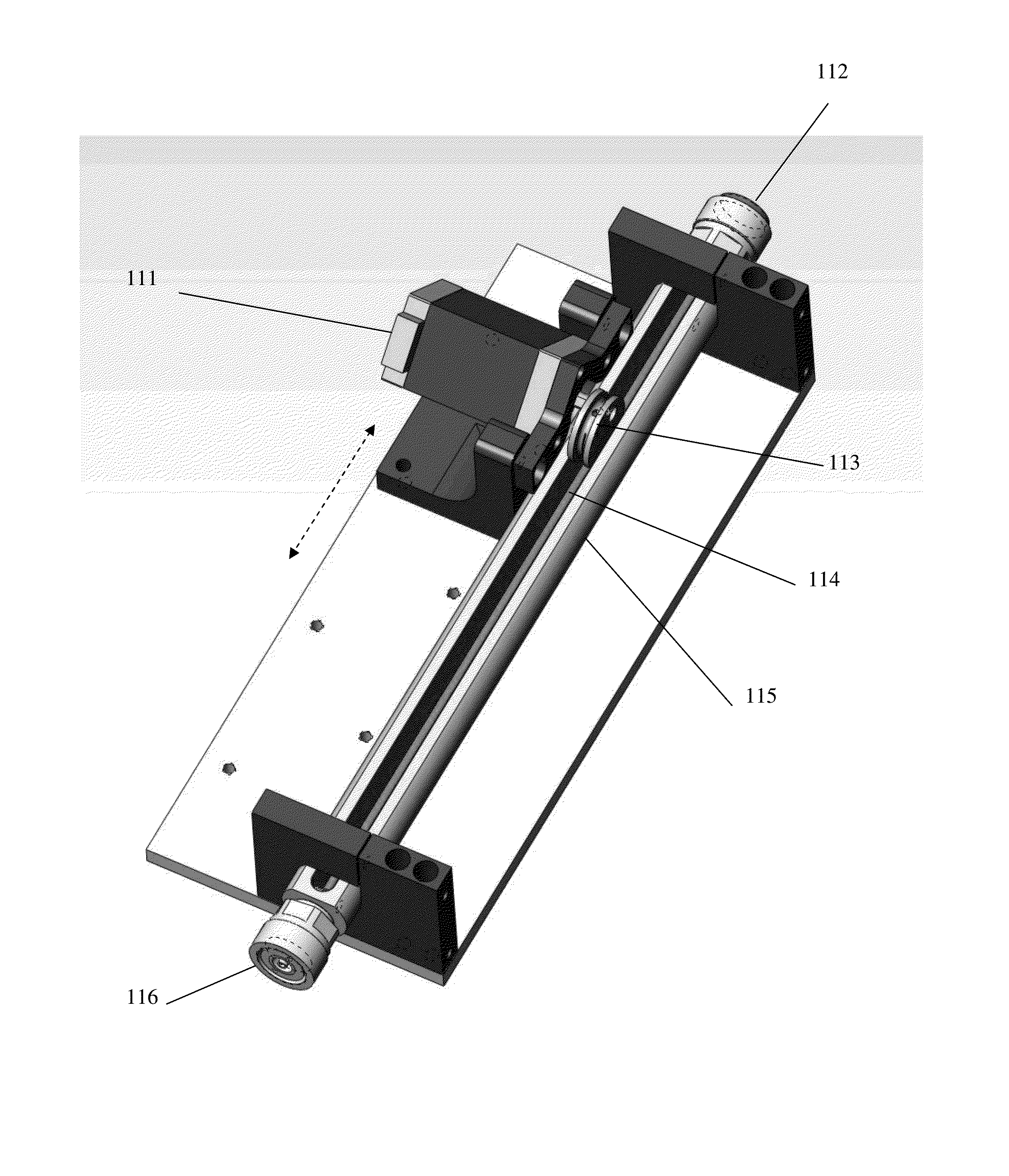Impedance tuners with rotating multi-section probes
a multi-section probe and impedance tuner technology, applied in the direction of waveguide type devices, continuous tuning, resonance circuit tuning, etc., can solve the problems of slowing down the tuning procedure, affecting the effect of tuning, and requiring very high precision and resolution vertical movement mechanisms
- Summary
- Abstract
- Description
- Claims
- Application Information
AI Technical Summary
Benefits of technology
Problems solved by technology
Method used
Image
Examples
Embodiment Construction
[0035]This invention describes a radio frequency, computer controlled electro-mechanical impedance tuner apparatus, which uses multi-section metallic disc-formed RF reflection probes, instead of block-formed probes used hitherto in such devices. The probes are shown in FIGS. 7(b), 8, 9, 12 and 15 to 20 in various configurations and views. Further differences to prior art tuners are the missing vertical axis and associated gear. Beyond that the impedance tuners operate in a similar way and provide equivalent RF performance as prior art tuners; i.e. a horizontal carriage displacement changes the phase and approaching the probe to the center conductor changes the amplitude of the reflection factor (see ref. 2).
[0036]The fundamental difference between prior art and new probes is shown in FIG. 7: FIG. 7(a) shows a prior art RF probe (slug) setup with two slugs (71, 75); each slug has a different horizontal length in order to cover a different frequency band. Slug (71) covers higher frequ...
PUM
 Login to View More
Login to View More Abstract
Description
Claims
Application Information
 Login to View More
Login to View More - R&D
- Intellectual Property
- Life Sciences
- Materials
- Tech Scout
- Unparalleled Data Quality
- Higher Quality Content
- 60% Fewer Hallucinations
Browse by: Latest US Patents, China's latest patents, Technical Efficacy Thesaurus, Application Domain, Technology Topic, Popular Technical Reports.
© 2025 PatSnap. All rights reserved.Legal|Privacy policy|Modern Slavery Act Transparency Statement|Sitemap|About US| Contact US: help@patsnap.com



